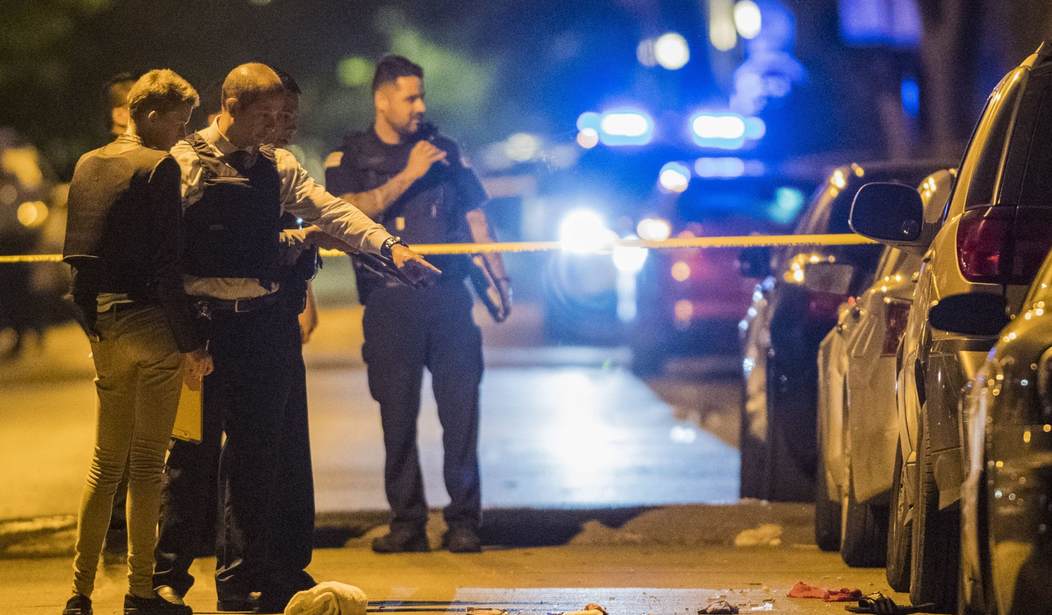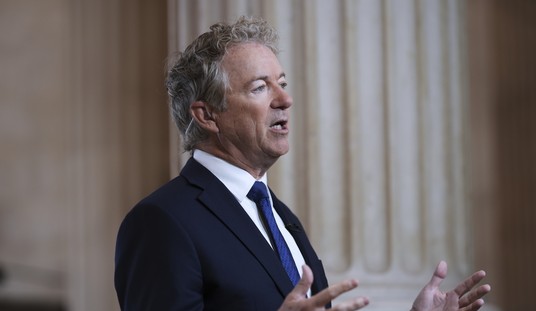From the 1960s into the 1990s, violent crime rates in the United States just kept going up. From 1966 to 1993, the number of murders and violent crimes across the country kept increasing as incarceration rates declined and as, coincidentally or not, gun control laws became more popular in our largest cities.
New York State passed a strict gun control law in 1980, following the killings of four New York cops. Chicago followed suit in 1982. Violent crime kept going up. By the early 1990s, the murder rate was increasing 5% per year and more than one million Americans reportedly suffered aggravated assault each year.
One of the most cited reasons for exploding crime was activist judges allowing criminals to serve comically reduced sentences before putting them back on the streets. Another was a lack of having enough police officers on the streets. Recidivism, the tendency of criminals to be repeat offenders in a revolving door justice system, was also a hotly discussed cause of crime. No less important was the breakdown of the family over the same decades. The Colombian and other drug cartels also came of age in the early 1980s, feeding drugs and crime into Miami, Los Angeles, and soon enough just about every city in America.
1991 through 1993 were the worst years for total recorded violent crime in decades. In 1991, 24,700 Americans were murdered. In 1992, 23,760 were murdered. In 1993, murderers killed 24,530. Rape numbers roughly tracked the murder rate, and aggravated assaults topped one million each year from 1990 to 1997. Violent crime was out of control.
For perspective, there were 252,177,000 Americans in 1991. In 2018, there were 327,167,434 Americans — but the number of murders in 2018 was 16,214 — versus the 24,700 in 1991. Americans have enjoyed a long, steady decline in violent crime since the 1990s even as we have added about 80 million in population and become more racially integrated, to the extent that many did not experience or no longer remember the bad crime years of the past.
During the great crime increase, leaders tried everything from gun control to “Just Say No” to McGruff the Crime Dog, to midnight basketball leagues, but nothing worked. Violent crime continued to increase.
There is no one single reason for the decline that began in the 1990s, but there are several contributors to it. In the mid-1980s, several states went the opposite way of New York and started relaxing gun laws. State after state enacted concealed and open carry laws, over the objections of gun-control advocates who warned such laws would lead to bloodbaths and battles on our streets. Despite perceptions created by mass shootings, which remain quite rare despite media coverage, those fears have not materialized.
A transformative street gun battle did happen, the North Hollywood Shootout in 1997 — three years after the federal “assault weapons” ban passed. In that battle, two body armor-clad bank robbers went on a shooting spree equipped with a variety of fully automatic rifles and handguns. The Los Angeles police officers who responded carried 9 mm semiauto pistols, .38 revolvers, and shotguns, finding themselves badly outgunned by the criminals despite the fact that there were 300 officers on the scene. The battle played out live on TV for 44 minutes, until both robbers were dead and 11 police wounded.
The effect of that battle was a push to allow police to acquire better firearms to match those the robbers, and the gangs and drug cartels, were already carrying. What they could not buy in the U.S. the cartels and gang acquired from arms dealers overseas. SWAT teams already and combat tactics among police already existed, and they proliferated after the NHS. New weapons and tactics also helped reduce bank robberies in LA from 900 in 1992 to just 11 in 2016.
The militarization of police that some conservatives including me have questioned, began in earnest after the North Hollywood Shootout. That militarization accelerated in the years of the global war on terrorism when surplus gear from the war found its way back home and into the hands of local police departments across the country.
The Republicans had advocated a “tough on crime” and “law and order” approach since Nixon’s successful presidential run in 1968, while the Democrats tended to blame society for crime and Democrat judges, elected and appointed, continued the revolving door between the prisons and the streets. To the extent there is any “systemic racism” as Black Lives Matter, antifa and now many Democrats claim, it’s worth noting that during all of the decades discussed here, the most violent cities in America tended to elect Democratic mayors and city councils. Baltimore, MD, consistently one of America’s most dangerous cities, has seen two of its last four mayors (both Democrats) resign under criminal investigation (Sheila Dixon was later convicted of embezzlement; Catherine Pugh was later found guilty of fraud) and is close to returning convicted Sheila Dixon back to office. It hasn’t had a Republican mayor since 1967.
Republicans have systematically lost power in the cities at the very same time those cities allegedly became worse for black Americans. Public sector unions including police unions also grew in power, as they extracted more protections from elected Democrats and contributed more campaign cash to the same Democrats they were routinely chatting with at the collective bargaining table.
America’s violent crime rate changed in 1993-94. By that point violent crime rates became intolerable and our cities were resembling war zones. In August 1994 the Democrat-led Congress passed and President Bill Clinton signed the Violent Crime Control and Law Enforcement Act. (Republicans took control of both houses of Congress in November 1994, three months after the crime bill had passed. Prior to the 1994 mid-terms, Republicans had not controlled the U.S. House for about 40 years.). Democrats passed the bill to shed their “soft on crime” image as the 1994 mid-terms approached. It’s also worth noting that the years-long DEA effort to get Medellin cocaine cartel kingpin Pablo Escobar finally succeeded on December 2, 1993.
President Clinton was desperate to show that he really was the “new kind of Democrat” he had campaigned as in 1992. The 1994 crime law created mandatory minimum sentencing at the federal level, increased prison capacity, expanded capital punishment, and was supposed to put 100,000 additional police on America’s streets. It also included the “assault weapons” ban, which attacked the cosmetic features of some firearms. By 2016, many Democrats had repudiated the 1994 crime bill, and it became an albatross for Hillary Clinton’s run for the White House on her left flank. Democrats either never truly believed in being tough on crime, or they had become recidivist softies as younger leftists pull the party their way.
Violent crime had ticked down slightly from 1991, but after the crime bill passed, violent crime went on its long and welcome decline. Our cities have spent the years since becoming safer and more liveable, attracting businesses and residents back even to their previously dangerous inner cores. All the while, gun control laws tended to become ever more relaxed, and a supermajority of states now have some form of open carry laws on the books.
So during the years following the crime bill, we got more police on our streets, more guns in the hands of the law-abiding, longer sentences for criminals and particularly for repeat offenders, and less crime. That recipe may have come about haphazardly, but it worked for the vast majority of Americans of all backgrounds and our streets became safer. That bill has been blamed for “mass incarceration,” but that’s a political term implying that people of color are simply rounded up and jailed. That’s not the case. Criminals are apprehended and convicted at a higher rate than before, liberal judges can no longer wave away deserved sentences for violent crimes and repeat offenders, and our prisons handle more incarcerations and longer sentences.
At the same time, the belief that police target people based on racial bias has been studied repeatedly and found to lack evidence. Media portrayal and public perception are another matter entirely. We have riots in our cities now thanks to a false impression of how policing works, and to a total collapse in civics instruction in our schools nationwide. The fact that so many Americans evidently blame the president — any president — for how policing is done on our streets speaks to rampant ignorance.
The vast majority of criminal justice is a local and state matter, as is the vast majority of policing. The vast majority of cases are handled by locally elected district attorneys offices, and police are managed by locally elected mayors. There are roughly seven times as many local and state law enforcement officials as federal, according to the Bureau of Justice Statistics. Most police work is local, while all our politics has become national and honest discussion has become all but impossible. Cancel culture destroys debate.
Violent crime fell an astounding 51% between 1993 and 2018 according to the FBI. All that progress in reducing crime is about to be undone. Minneapolis, New York, and Los Angeles are either “disbanding” or slashing funding from their police departments. More leftwing-run cities will follow, at least slashing funding from police and diverting that money toward social workers and other programs that have already been tried and proven to fail to reduce crime. Because no Democrat will stand up to the mob on their left, we will see calls to release more convicted criminals from prison. Some local and state Democrats will undoubtedly do the far left’s bidding and put more convicts back on the streets, where there will soon be fewer police to deal with them.
We’ve been down this bloody road before.
The media love to use a trope to oppose Republican policies and proposals — “women, children, and minorities hit hardest.”
The far left will drive the defunding movement and reduce police presence and incarceration rates while doing nothing about the police unions that make holding bad police officers accountable for their actions nearly impossible. This will leave fewer police to deal with domestic violence, family law, and many crimes and criminals in America’s most difficult neighborhoods — creating one time a policy will demonstrably hurt women, children, and minorities the most as it affects the nation as a whole.
Do Most Americans Really Support the Riots and Burning the Police Precinct? Newsweek Says Yes! (But They Don’t)









Join the conversation as a VIP Member